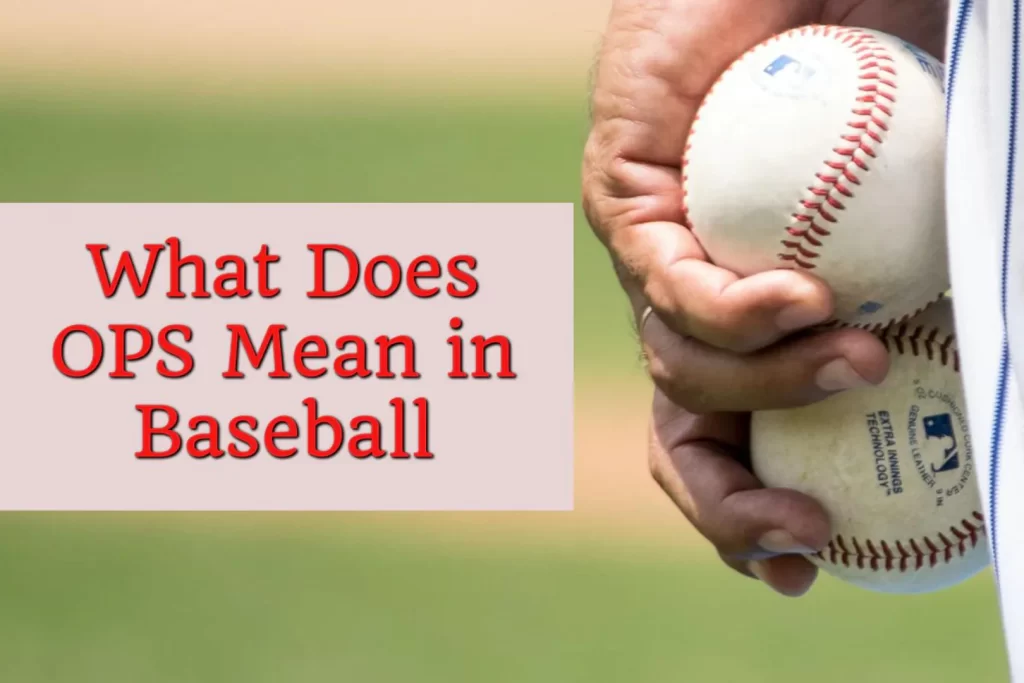Understanding OPS in Baseball: A Comprehensive Guide
On-base Plus Slugging (OPS) is a vital statistic in baseball that combines a player’s on-base percentage (OBP) and slugging percentage (SLG) into a single number. This statistic provides a more comprehensive view of a player’s offensive capabilities than traditional metrics like batting average. OPS is widely used by analysts, coaches, and fans to evaluate a player’s performance and contribution to their team. This article will explore the intricacies of OPS, its calculation, significance, and its impact on player evaluation in baseball.
What is OPS?
OPS stands for On-base Plus Slugging. It is a statistic that measures a player’s ability to get on base and hit for power. The formula for calculating OPS is straightforward:
Where:
- On-base Percentage (OBP) measures how often a player reaches base per plate appearance, including hits, walks, and hit-by-pitches.
- Slugging Percentage (SLG) measures the power of a hitter by calculating the total number of bases a player records per at-bat.
Importance of OPS
OPS is significant for several reasons:
- Comprehensive Evaluation: By combining OBP and SLG, OPS provides a more holistic view of a player’s offensive abilities than either statistic alone.
- Player Comparisons: OPS allows for easier comparisons between players, regardless of their position or batting style.
- Impact on Games: Players with high OPS are typically more valuable to their teams, as they contribute to scoring runs more effectively.
- Trend Analysis: OPS can help identify trends in a player’s performance over time, aiding teams in making informed decisions regarding player development and acquisition.
Calculating OPS
To calculate OPS, follow these steps:
Step 1: Calculate On-base Percentage (OBP)
The formula for OBP is:
Step 2: Calculate Slugging Percentage (SLG)
The formula for SLG is:
Where Total Bases is calculated as follows:
- Singles = 1 base
- Doubles = 2 bases
- Triples = 3 bases
- Home Runs = 4 bases
Step 3: Combine OBP and SLG
Once you have calculated both OBP and SLG, simply add them together to get the OPS.
Example Calculation
Let’s consider a player with the following statistics:
- Hits: 150
- Walks: 50
- Hit-by-Pitches: 5
- At-Bats: 500
- Sacrifice Flies: 5
- Singles: 100
- Doubles: 30
- Triples: 5
- Home Runs: 15
Step 1: Calculate OBP
Step 2: Calculate SLG
Total Bases = (100 singles) + (30 doubles × 2) + (5 triples × 3) + (15 home runs × 4)
Step 3: Calculate OPS
Historical Context of OPS
OPS has gained popularity since the late 20th century as advanced statistics have become more integral to baseball analysis. It was popularized by sabermetricians and is now a standard statistic used by teams, analysts, and fans alike.
OPS in the Modern Game
In today’s game, OPS is often used in conjunction with other advanced metrics like Weighted On-base Average (wOBA) and Wins Above Replacement (WAR) to provide a deeper understanding of a player’s overall contribution to their team.
OPS+
OPS+ is a variation of OPS that adjusts a player’s OPS based on the league average and the ballpark factors. The formula for OPS+ is:
An OPS+ of 100 is considered league average, while values above or below 100 indicate above-average or below-average performance, respectively.
Factors Influencing OPS
Several factors can influence a player’s OPS, including:
- Position: Players in power positions (like first base or outfield) typically have higher OPS due to the nature of their roles.
- Ballpark Factors: Some stadiums are more conducive to hitting due to dimensions, altitude, and weather conditions.
- Pitching Quality: Facing elite pitchers can negatively impact a player’s OPS, while weaker pitching can lead to higher numbers.
- Team Strategy: Teams that emphasize on-base skills or power hitting may influence players’ approaches at the plate.
Frequently Asked Questions
Q: What is a good OPS?
A: A good OPS varies by era, but generally, an OPS above .800 is considered very good, while an OPS above .900 is elite.
Q: How does OPS compare to batting average?
A: OPS provides a more comprehensive view of a player’s offensive contributions than batting average, as it considers both on-base ability and power.
Q: Can OPS be used to evaluate pitchers?
A: OPS is primarily a hitter’s statistic. However, a similar statistic called OPS allowed can be used to evaluate pitchers based on the OPS of the batters they face.
Q: Why is OPS important in modern baseball?
A: OPS is important because it helps teams evaluate players’ offensive contributions more effectively, leading to better decision-making in player acquisitions and game strategies.
Q: Are there any limitations to using OPS?
A: While OPS is a valuable statistic, it does not account for defensive contributions or baserunning skills, which are also important aspects of a player’s overall value.
Conclusion
On-base Plus Slugging (OPS) is a critical statistic in baseball that provides insight into a player’s offensive performance. By combining on-base percentage and slugging percentage, OPS offers a comprehensive view of a player’s ability to contribute to their team’s scoring efforts. As baseball continues to evolve, OPS remains a fundamental metric for evaluating players and understanding the game at a deeper level.
| Feature | Description |
|---|---|
| Definition | On-base Plus Slugging |
| Formula | OPS = OBP + SLG |
| Importance | Comprehensive evaluation of offensive ability |
| Good OPS | Above .800 is considered good; above .900 is elite |
| Variants | OPS+ (adjusted for league and park factors) |
For more detailed information about OPS in baseball, you can refer to the Wikipedia page on On-base Plus Slugging.



